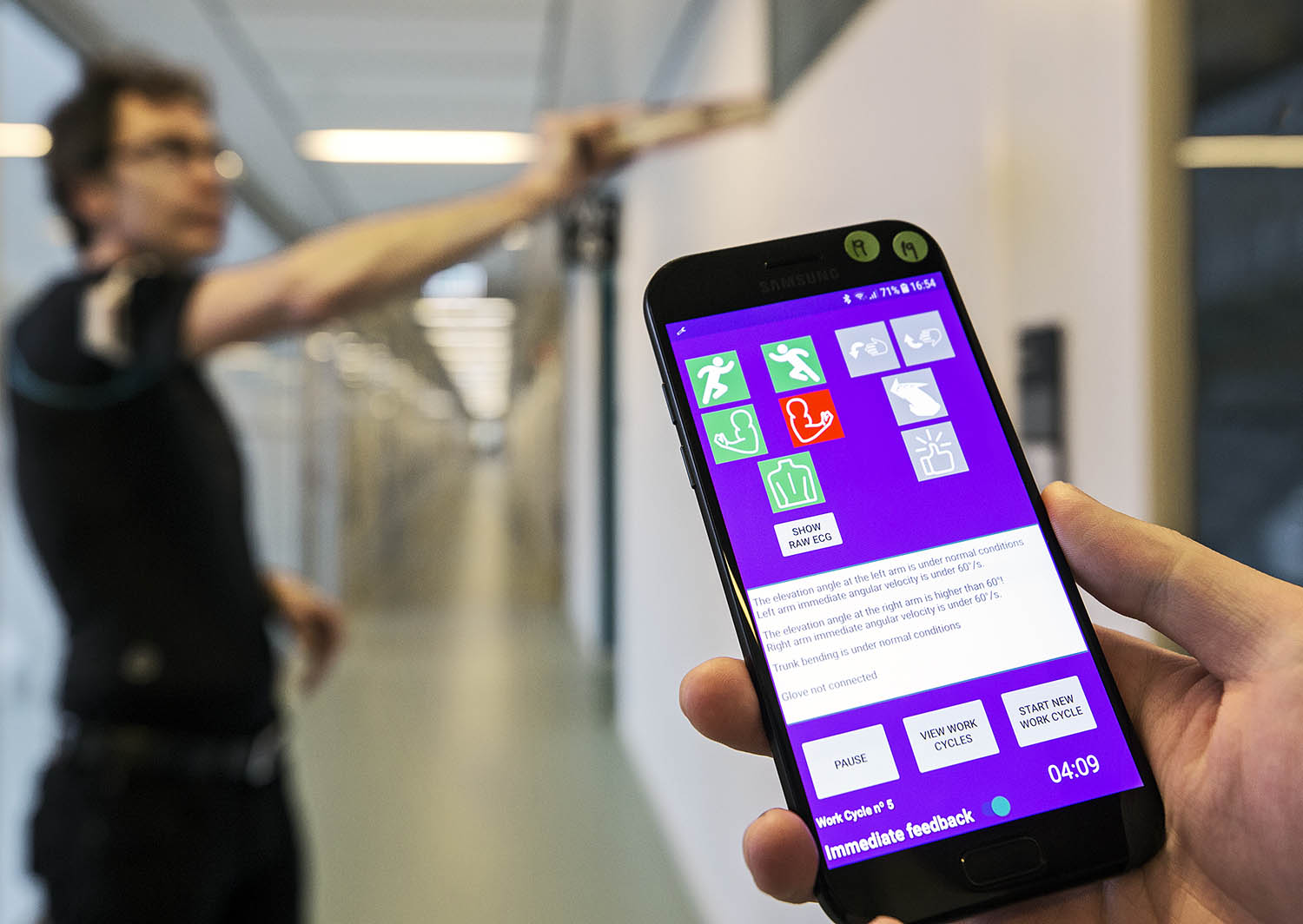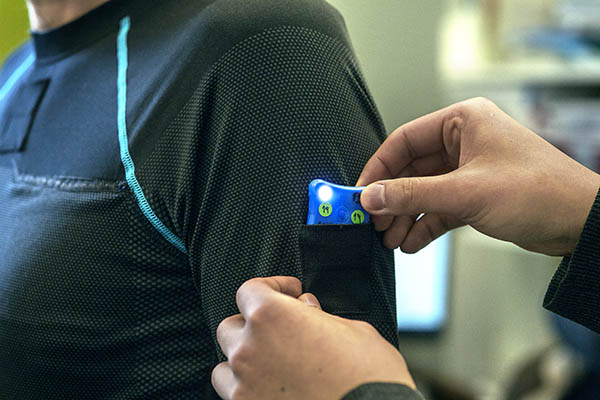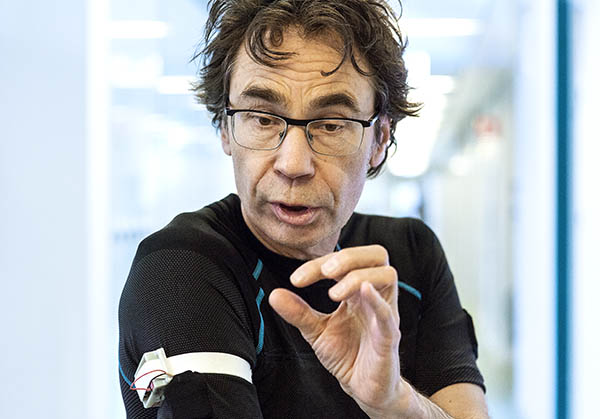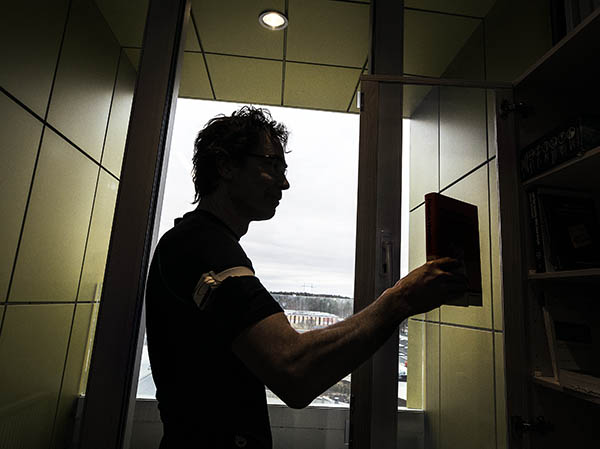The smart top that tracks your body posture

Does your body ache after you lift something incorrectly or bend down too much at work?
This top tells you when you should straighten your back and lower your elbows.
The smart top that Mikael Forsman’s research group has developed records your movements and posture and warns you when you risk causing strain injuries.
It looks like a totally ordinary fitted T-shirt. But when Forsman, wearing the smart top, spends time rearranging books on the top shelf of his bookshelf, he gets a small but distinct vibration signal from a sensor in the sleeve.
“The signal tells me that I’ve been working too long with my arms stretched upwards, a position that eventually risks causing damage to my shoulders,” he explains.

The same thing happens when he spends time bending down to sort books on the bottom shelf: the technology reacts to his spine being bowed at a punishing angle for too long.
Forsman is a Professor of Ergonomics at KTH and the Karolinska Institute. He has dedicated much of his research to developing and applying technology within ergonomics.
“Strain injuries are, after psychological difficulties, the most common reason for work-related sick leave today,” he says.
“Workers in heavy industry and the food industry plus care personnel are some of the professional groups that are hardest hit. Strain injuries are also common amongst store employees, hairdressers and cleaners.”

Within company healthcare, Forsman is particularly interested in the methods used to monitor the risk of strain injuries during various kinds or work activity.
An ergonomist usually makes an assessment after making observations based on a systematic method that is a bit like a check list.
However, when different ergonomists assess the same work activity, they often reach different conclusions with regard to the risk.
This was how the idea of a smart top was born. Because essentially, it is above all a measuring tool. The finesse with the top is its small made to measure pockets that house tiny sensors.
The sensors record the angle of your arms or back in relation to a zero point and send all the data to a smartphone via Bluetooth.
“For example, you can see which workstations in an assembly line risk leading to injuries – and do something about this,” says Forsman.

You can change the way the work is organised, for example, so the assembly workers do not switch between stations with the same type of load, or improve the machinery and tools.
The smart top is only a prototype at the moment, but it has already been tested several times. Initially primarily as a smart way of recording and gathering data on loads.
The next step was to give the top wearers direct feedback via headphones connected to an app on the phone. Volvo and Scania have both tested the model.
Development work is now being continued in a more extensive project financed by insurance company, AFA Försäkring.
The model that provides feedback with the help of vibrations has also been tested at Scania and later this spring, it will also be tested by 60 supermarket employees.

The top has received positive reviews from users, most of whom say it is no problem to work while wearing it, and that they have benefited from the feedback they get from it.
Via the top’s technology system, people should therefore be able to get reminders and warning signals that help them to correct their posture and so avoid injuries.
“If we are to be able to get closer to a zero vision for work-related injuries, initiatives will be needed in work techniques, training and healthcare. We must be able to get there . Work should not cause you pain.”
Ursula Stigzelius
Photo: Håkan Lindgren